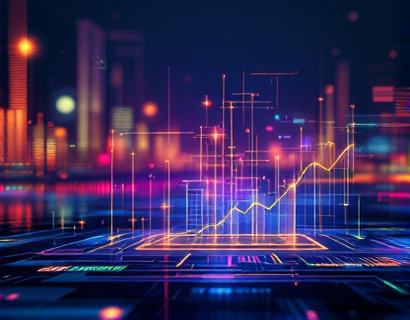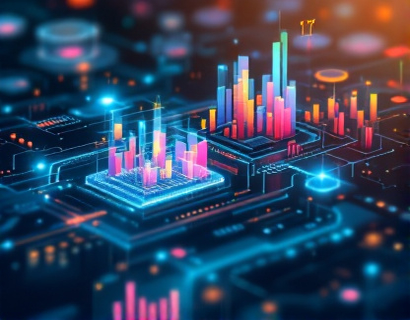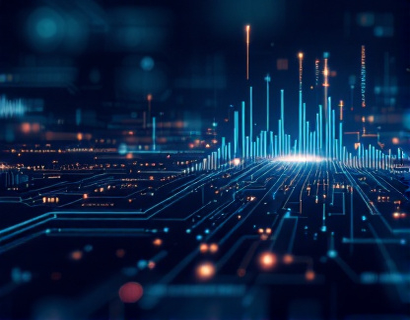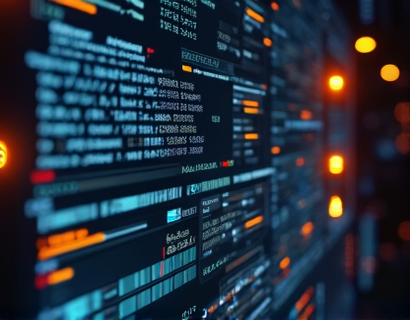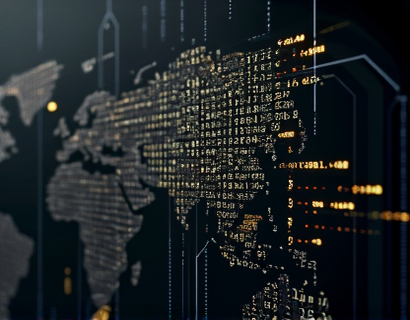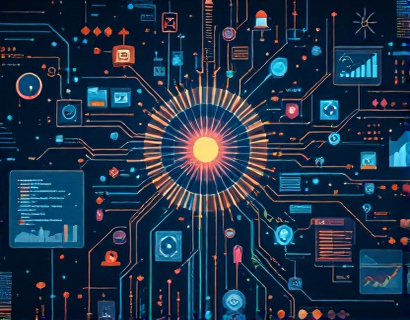The Synergy of AI and Crypto: Pioneering Financial Innovation
The intersection of artificial intelligence and cryptocurrency is giving birth to a new era of financial innovation. This convergence is not just a technological curiosity but a transformative force reshaping the landscape of financial services. As we delve into this topic, it's essential to understand the individual roles of AI and crypto before exploring how their union is catalyzing unprecedented advancements.
Understanding Artificial Intelligence in Finance
Artificial intelligence, a subset of computer science, focuses on creating systems that can perform tasks requiring human intelligence, such as learning, reasoning, and self-correction. In the financial sector, AI has been a game-changer, offering solutions that enhance efficiency, accuracy, and decision-making. From algorithmic trading to fraud detection, AI's impact is profound and multifaceted.
One of the primary applications of AI in finance is in predictive analytics. By analyzing vast datasets, AI algorithms can identify patterns and trends that humans might miss. This capability is invaluable for forecasting market movements, assessing risks, and optimizing investment strategies. Machine learning, a key component of AI, enables systems to improve their performance over time without explicit programming, making it an ideal tool for adapting to the dynamic nature of financial markets.
Cryptocurrency: A New Paradigm in Digital Finance
Cryptocurrency, on the other hand, represents a revolutionary approach to digital currency. Unlike traditional fiat currencies, cryptocurrencies operate on decentralized blockchain networks, ensuring transparency, security, and immutability. Bitcoin, the first and most well-known cryptocurrency, paved the way for a multitude of altcoins, each with unique features and use cases. The decentralized nature of crypto challenges the traditional financial system, offering a peer-to-peer alternative that bypasses intermediaries.
Beyond being a medium of exchange, cryptocurrencies have sparked a broader movement towards decentralization in various sectors. Smart contracts, self-executing contracts with the terms directly written into code, are a prime example. These contracts automate and enforce agreements without the need for intermediaries, reducing costs and increasing trust in transactions.
AI and Crypto: A Perfect Match
The combination of AI and cryptocurrency is particularly potent, as both technologies complement each other in several ways. AI's ability to process and analyze large datasets is crucial for the complex computations required in blockchain networks. Conversely, the transparency and security of blockchain provide an ideal environment for AI algorithms to operate, ensuring data integrity and reducing the risk of manipulation.
One of the most significant applications of AI in the crypto space is in the development of more sophisticated trading algorithms. These algorithms can analyze market data in real-time, identify profitable trading opportunities, and execute trades with minimal human intervention. The integration of AI enhances the precision and speed of these algorithms, leading to better investment decisions and higher returns.
Enhanced Risk Management
Risk management is a critical aspect of financial operations, and AI and crypto together offer advanced solutions. AI can analyze historical data and current market conditions to predict potential risks and suggest mitigation strategies. For instance, AI-driven systems can monitor transaction patterns to detect anomalies that may indicate fraudulent activity. In the context of crypto, where transactions are pseudonymous, this capability is particularly valuable for maintaining the integrity of the ecosystem.
Moreover, AI can help in managing the volatility inherent in cryptocurrency markets. By predicting price movements based on various factors, AI algorithms can assist investors in making informed decisions, reducing the impact of emotional biases. This data-driven approach to risk management is a significant step forward from traditional methods, which often rely on subjective judgments.
Improved User Experience
The user experience in the crypto space can be enhanced through AI-powered tools. For newcomers, the complexity of crypto can be daunting, but AI can simplify this journey. Chatbots and virtual assistants, powered by natural language processing, can provide instant support and guidance, answering common questions and walking users through complex processes. This not only improves user satisfaction but also lowers the barrier to entry for new users.
Additionally, AI can personalize the user experience by recommending tailored services and products based on individual preferences and behavior. For example, a crypto exchange could use AI to suggest optimal wallet solutions or trading strategies based on a user's transaction history and risk tolerance. This level of personalization is a significant advantage over traditional financial services, which often offer one-size-fits-all solutions.
Decentralized Finance (DeFi) and AI
Decentralized Finance, or DeFi, is an emerging field that leverages blockchain technology to create financial systems without central authorities. AI plays a crucial role in enhancing DeFi platforms by improving their functionality and security. For instance, AI can optimize lending and borrowing protocols by dynamically adjusting interest rates based on market conditions and user behavior. This ensures that both lenders and borrowers benefit from efficient and fair terms.
Smart contracts, a cornerstone of DeFi, can be further enhanced with AI. By incorporating machine learning algorithms, smart contracts can adapt to changing conditions and execute more complex logic. This flexibility allows for the creation of more sophisticated financial instruments, such as decentralized derivatives and insurance products, which can cater to a wider range of needs and risk profiles.
Cross-Chain Interoperability
Another area where AI and crypto intersect is in cross-chain interoperability. As the crypto ecosystem grows, the need for seamless interaction between different blockchain networks becomes increasingly important. AI can facilitate this by developing intelligent protocols that ensure secure and efficient data transfer and asset movement across chains. This interoperability is essential for building a unified and interconnected financial system, where users can access a broader range of services and opportunities.
AI-driven bridges and relay chains can automate the process of moving assets between different blockchains, reducing friction and enhancing user experience. This not only promotes the adoption of various cryptocurrencies but also fosters innovation by allowing developers to build on a more integrated and versatile platform.
Challenges and Considerations
While the potential of AI and crypto together is immense, there are several challenges that need to be addressed. One of the primary concerns is regulatory compliance. The crypto space is still largely unregulated, and the integration of AI adds another layer of complexity. Ensuring that AI-driven financial solutions comply with existing regulations and adapt to new ones is crucial for their widespread adoption.
Another challenge is the ethical use of AI. As AI systems become more autonomous, issues related to bias, transparency, and accountability come to the forefront. It's essential to develop AI algorithms that are fair, explainable, and resistant to manipulation. This is particularly important in the financial sector, where decisions can have significant impacts on individuals and markets.
Data Privacy and Security
Data privacy and security are paramount in both AI and crypto. The sensitive nature of financial data requires robust security measures to protect against breaches and unauthorized access. AI can help in enhancing security by detecting and mitigating threats in real-time, but it also introduces new vulnerabilities that must be carefully managed. Implementing advanced encryption techniques and zero-trust security models is essential to safeguard user data.
Furthermore, the use of AI in finance raises questions about data ownership and consent. Users should have control over their data and understand how it is being used. Transparent data policies and user-friendly interfaces that explain data usage can help build trust and ensure compliance with privacy regulations.
Future Prospects
The future of AI and crypto in finance is bright, with numerous opportunities on the horizon. As technology continues to advance, we can expect even more sophisticated applications that further blur the lines between these two fields. One exciting prospect is the development of AI-powered autonomous financial advisors, which can manage portfolios and make investment decisions with minimal human oversight. These advisors could democratize access to professional financial services, making high-quality investment strategies available to a broader audience.
Another area of growth is the integration of AI with other emerging technologies, such as the Internet of Things (IoT) and 5G networks. The increased connectivity and data generation from IoT devices can provide AI with richer inputs, leading to more accurate predictions and insights. This synergy can revolutionize various aspects of finance, from supply chain finance to personal banking.
Conclusion
The convergence of AI and crypto is not just a technological trend but a fundamental shift in how financial services are delivered and experienced. By leveraging the strengths of both technologies, we can create more efficient, secure, and user-friendly financial systems. As we move forward, it's crucial to address the challenges and ensure that the benefits of this synergy are realized by all stakeholders. The next wave of financial innovation is here, and AI and crypto are at the forefront, paving the way for a more inclusive and dynamic financial future.








